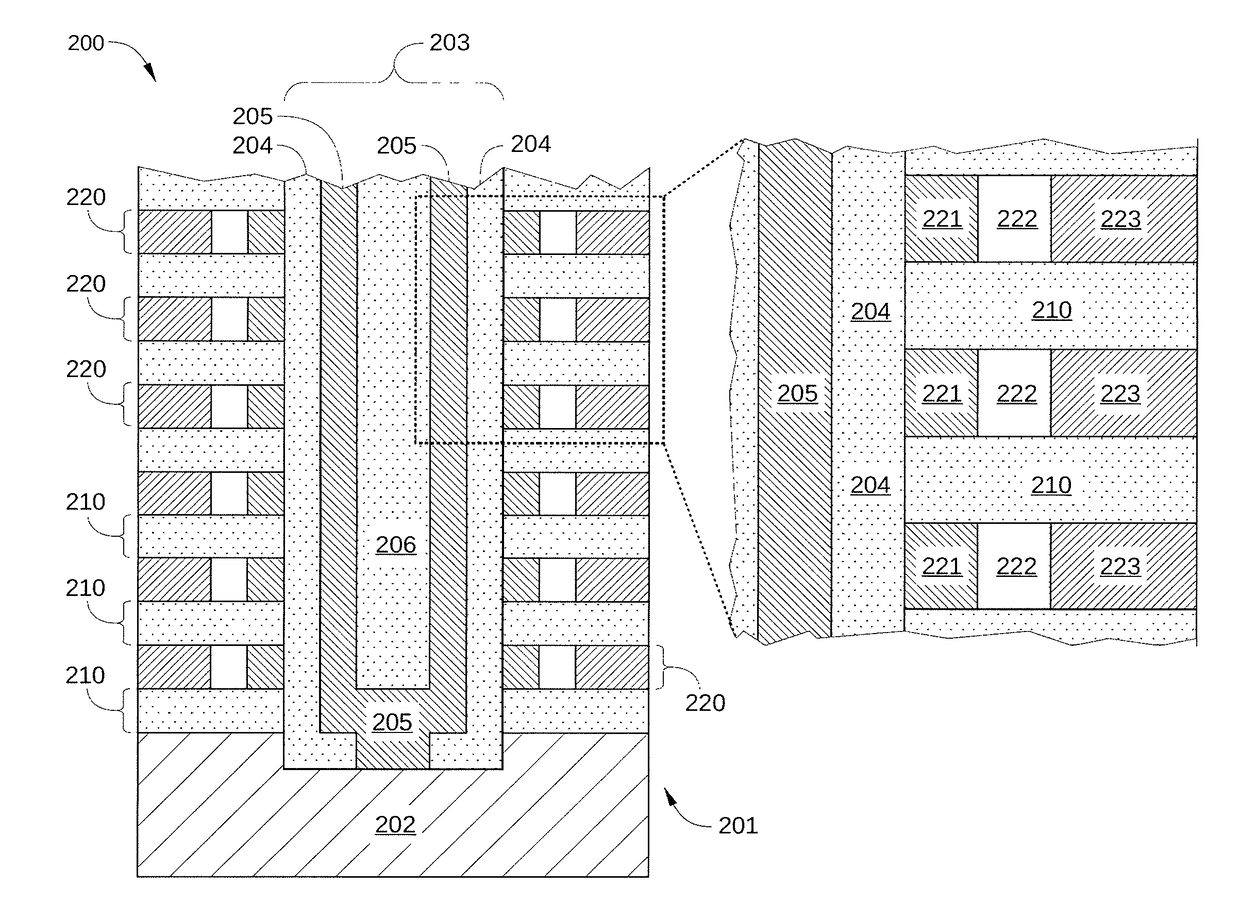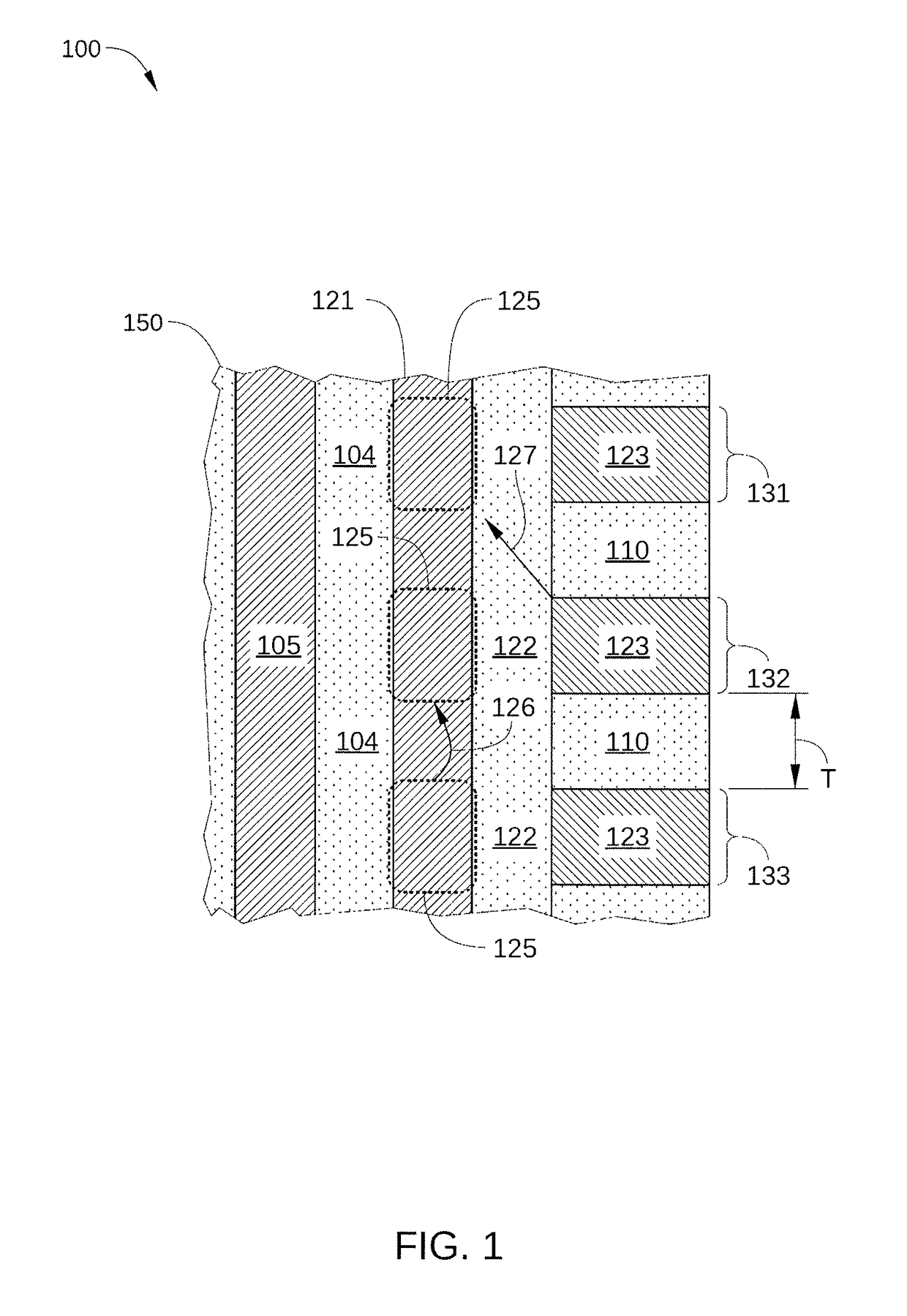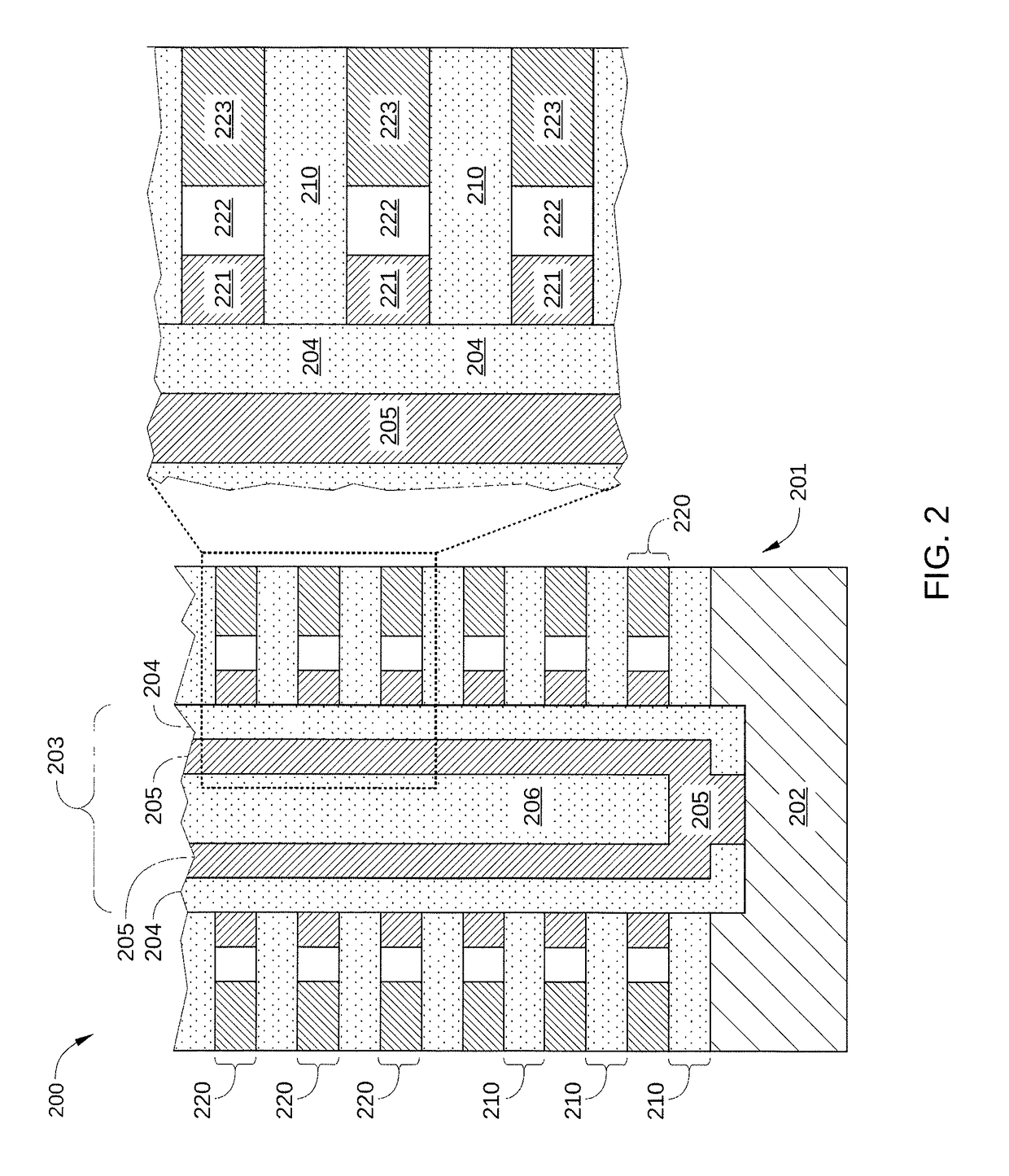Charge-trap layer separation and word-line isolation in a 3-d NAND structure
a nand structure and charge-trap technology, applied in the field of semiconductor substrate processing, can solve the problems of leaking of trapped charges in such memory cells, increasing the aspect ratio of memory cell strings, and difficulty in maintaining memory hole uniformity and minimizing variation in memory cell dimensions
- Summary
- Abstract
- Description
- Claims
- Application Information
AI Technical Summary
Benefits of technology
Problems solved by technology
Method used
Image
Examples
Embodiment Construction
[0019]In the following description, numerous specific details are set forth to provide a more thorough understanding of the embodiments of the present disclosure. However, it will be apparent to one of skill in the art that one or more of the embodiments of the present disclosure may be practiced without one or more of these specific details. In other instances, well-known features have not been described in order to avoid obscuring one or more of the embodiments of the present disclosure.
[0020]In a conventional three-dimensional (3D) NAND memory device, the charge storage region of a memory cell may be susceptible to leakage of trapped charge into or out of the charge storage region of adjacent memory cells, compromising stored data, as illustrated in FIG. 1. FIG. 1 is a schematic cross-sectional view of a portion 150 of a conventional three-dimensional (3D) NAND memory device 100. Portion 150 includes memory cells 131, 132, and 133, each separated by insulator layers 110, such as ...
PUM
 Login to View More
Login to View More Abstract
Description
Claims
Application Information
 Login to View More
Login to View More - R&D
- Intellectual Property
- Life Sciences
- Materials
- Tech Scout
- Unparalleled Data Quality
- Higher Quality Content
- 60% Fewer Hallucinations
Browse by: Latest US Patents, China's latest patents, Technical Efficacy Thesaurus, Application Domain, Technology Topic, Popular Technical Reports.
© 2025 PatSnap. All rights reserved.Legal|Privacy policy|Modern Slavery Act Transparency Statement|Sitemap|About US| Contact US: help@patsnap.com



